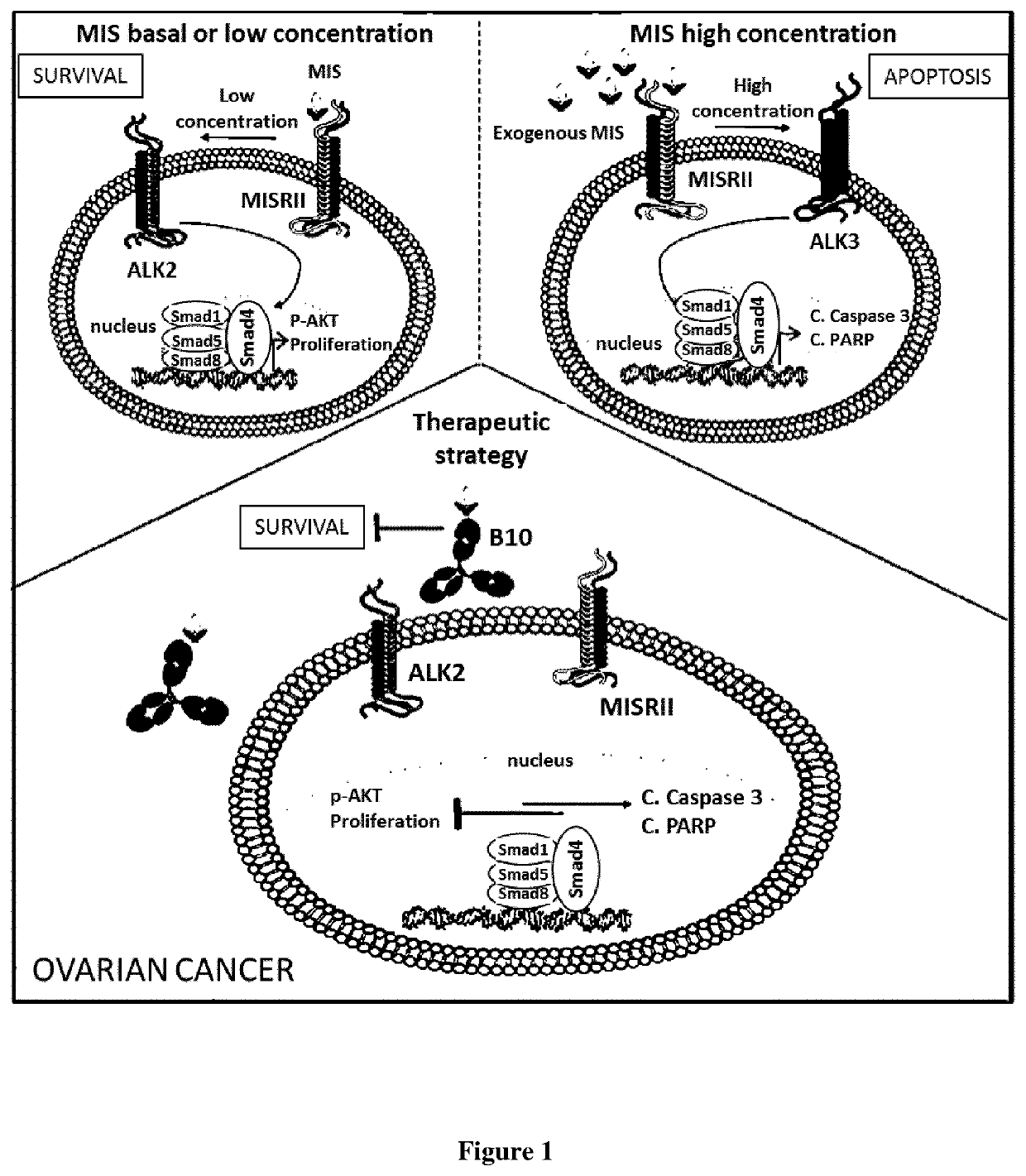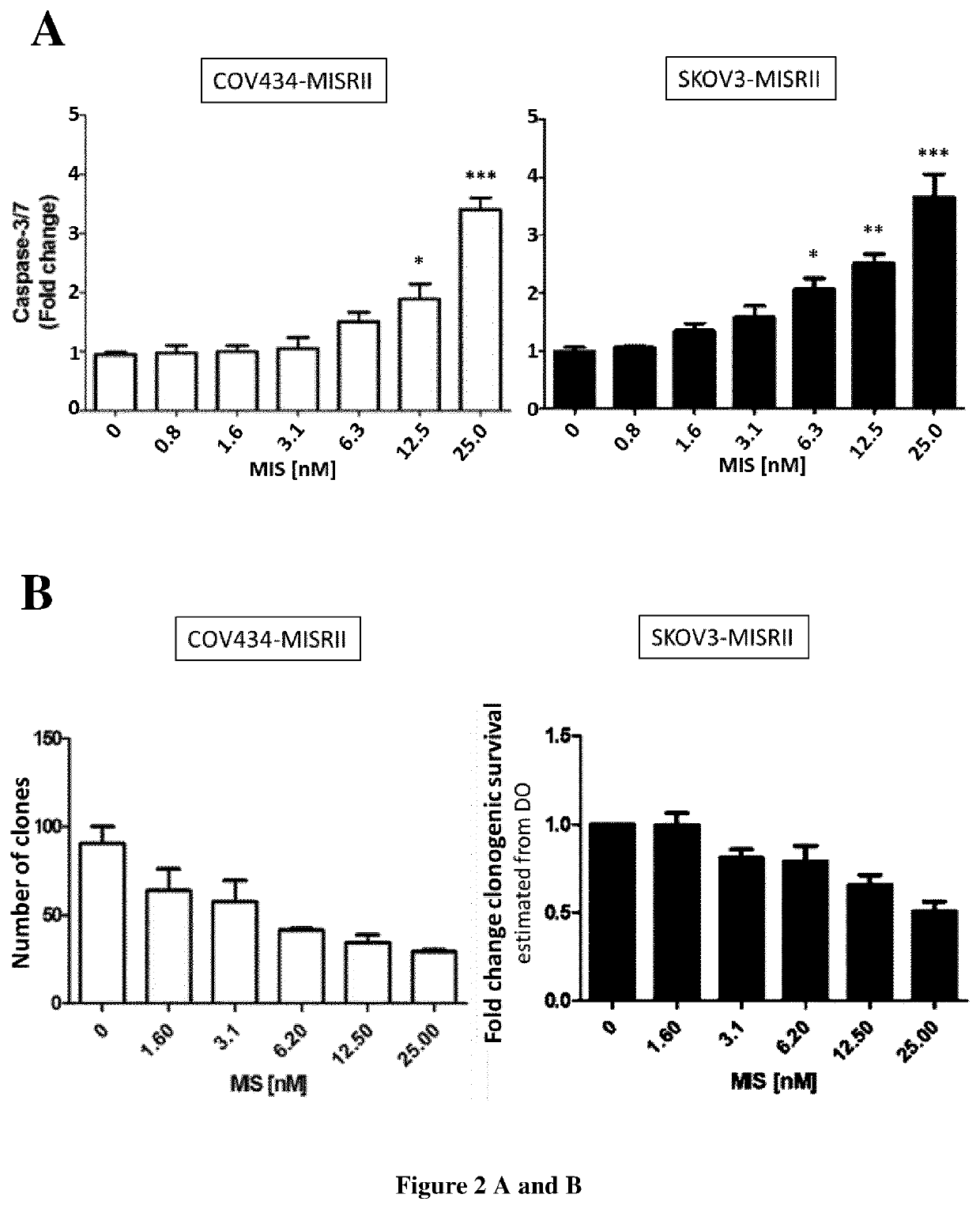Anti-müllerian inhibiting substance antibodies and uses thereof
a technology of anti-mis and inhibiting substance, which is applied in the direction of immunoglobulins against hormones, drug compositions, peptides, etc., can solve the problems of hampered use of recombinant mis, achieve suppressed mis proliferative effect, improve cancer cell viability, and reduce clonogenic survival
- Summary
- Abstract
- Description
- Claims
- Application Information
AI Technical Summary
Benefits of technology
Problems solved by technology
Method used
Image
Examples
example
[0158]Material & Methods
[0159]Cell Lines
[0160]The human COV434 (sex cord-stromal tumor) (Chan-Penebre et al., 2017; Zhang et al., 2000) and KGN (granulosa cell tumor) (Nishi et al., 2001) cell lines were kind gifts from Dr. P I Schrier (Department of Clinical Oncology, Leiden University Medical Center, Nederland) and Dr T Yanase (Kyushu University, Fukuoka, Japan), respectively. The human epithelial ovarian cancer cell lines SKOV3 and NIH-OVCAR8 were from ATCC (ATCC® HTB-77) and from the Division of Cancer Treatment and Diagnosis, NCI, Frederick, Md., USA, respectively. Cells were grown in DMEM F12 medium without red phenol containing 10% heat-inactivated fetal bovine serum (FBS). COV434-MISRII and SKOV3-MISRII cells were supplemented with 0.33 mg / ml geneticin (InvivoGen, ant-gn-1). Cells were grown at 37° C. in a humidified atmosphere with 5% CO2, and medium was replaced twice per week. Cells were harvested with 0.5 mg / ml trypsin / 0.2 mg / ml EDTA. All culture media and supplements we...
PUM
| Property | Measurement | Unit |
|---|---|---|
| volume | aaaaa | aaaaa |
| pH | aaaaa | aaaaa |
| pH | aaaaa | aaaaa |
Abstract
Description
Claims
Application Information
 Login to View More
Login to View More - R&D
- Intellectual Property
- Life Sciences
- Materials
- Tech Scout
- Unparalleled Data Quality
- Higher Quality Content
- 60% Fewer Hallucinations
Browse by: Latest US Patents, China's latest patents, Technical Efficacy Thesaurus, Application Domain, Technology Topic, Popular Technical Reports.
© 2025 PatSnap. All rights reserved.Legal|Privacy policy|Modern Slavery Act Transparency Statement|Sitemap|About US| Contact US: help@patsnap.com



